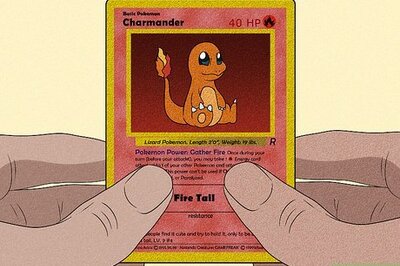
views
Months ahead of the Uttar Pradesh assembly elections, caste-based parties in neighbouring Bihar are trying to put up a united face by mounting pressure on the central government to include caste data in the 2021 census. Janata Dal (United), part of the ruling National Democratic Alliance, and the Rashtriya Janata Dal, the state’s chief opposition party, are on the same side over the contentious issue and are trying to send across the message to the Other Backward Classes (OBC) electorate that their numbers matter to them, as far as the political arithmetic of Bihar is concerned.
Poll ploy
The big picture of the caste census would be lost in the din of political uproar if we don’t dissect how OBC votes matter in Bihar. With caste data in hand, any party would find it easy to devise its electoral strategy ahead of polls.
So far, only the Scheduled Castes (SC) and Scheduled Tribes (ST) were included in the census data. If the Centre decides to accept the demand, how this will impact policymaking would be a matter of concern. Whichever party comes to power at the Centre, taking a decision will impact the future course of Indian politics.
The power in Bihar has been rotating between two political amalgamations since the 1990s, primarily the Rashtriya Janata Dal and Janata Dal (United). Both happen to be the by-products of the post-Mandal socio-economic movement that left an indelible mark on the body politic of India.
The vote bank of the Rashtriya Janata Dal comes from the OBC of which the Yadav community is a loyal component, comprising roughly 16 per cent of Bihar’s total population. The Yadavs play an important role in Bihar politics as they have been rallying behind the RJD, a party set up by Lalu Prasad Yadav, belonging to the community of cowherds. Now, the Rashtriya Janata Dal is being led by his son, Tejashwi Yadav, a promising young face of Bihar politics and the leader of the opposition in the state assembly.
Other than the Yadavs, the Kushwahas and Kurmis are two important castes within the OBCs, but they have shown their loyalty towards the JD (U), a party led by Nitish Kumar, the incumbent chief minister.
It’s not surprising then that both the parties are sailing in the same boat on the caste-based census issue.
Kushwahas and Kurmis constitute around 11 per cent of Bihar’s population. These two form the core vote bank of the JD (U), and so Nitish Kumar can’t keep himself aloof from how politics is shaping up in the state.
The beginning
The first official caste-based census took place in the pre-Independence era in 1931, which estimated the total percentage of other backward classes to be around 52 per cent. The OBCs comprise castes that aren’t part of the upper caste and Dalit blocks. The second caste census started in 1941, but this mammoth exercise lapsed due to the Second World War.
Caste politics returned with a vengeance after the Mandal commission was set up in 1979 to identify various groups that form the OBCs. The proportion of OBCs came close to 52 per cent, based on the caste census of 1931.
After a lot of procrastination, the Mandal commission report was published in 1990. The VP Singh government at the Centre decided to implement its recommendations, but there was fierce opposition against this decision. Although the Mandal commission settled the issue of quotas, only temporarily, the political class never gave up the larger share for reservation.
After reserving 27 per cent of seats for OBCs, the Supreme Court ruled in 1992 that reservation must not exceed 50 per cent. While giving this instruction, the SC pointed out that anything above this limit would violate equal access to jobs for others. But in many states, reservation crossed even 60 per cent.
Centre in a fix
After more than 30 years, the demand for an OBC census has again gained political currency. Caste-based parties in Bihar and Uttar Pradesh have upped the ante for the inclusion of caste details in the census to be held sometime this year.
In 2011, the United Progressive Alliance (UPA) government had in principle agreed to include the OBCs in the census, but it went ahead without divulging caste-based details.
Now, it’s up to the NDA government to tackle the tricky issue of the caste-based census and placate Nitish Kumar. As far as the ruling political combination of Bihar is concerned, the JD(U) and the Bharatiya Janata Party (BJP) have differing views on the matter, and there isn’t any meeting ground.
On August 7, the RJD is taking to the streets with its demand for the inclusion of OBCs in the caste enumeration process, though minister of state for home Nityanand Rai confirmed in the Lok Sabha that there was no plan to enumerate caste-based data in the census 2021 other than for the SC and ST. Various Bihar-based leaders have also met union home minister Amit Shah and presented their demands.
While the Bihar parties are asking for a caste-based census, the BJP stands isolated. It will be interesting to see how the Centre deals with the issue, which is becoming trickier with each passing day.
Read all the Latest News, Breaking News and Coronavirus News here.


















Comments
0 comment